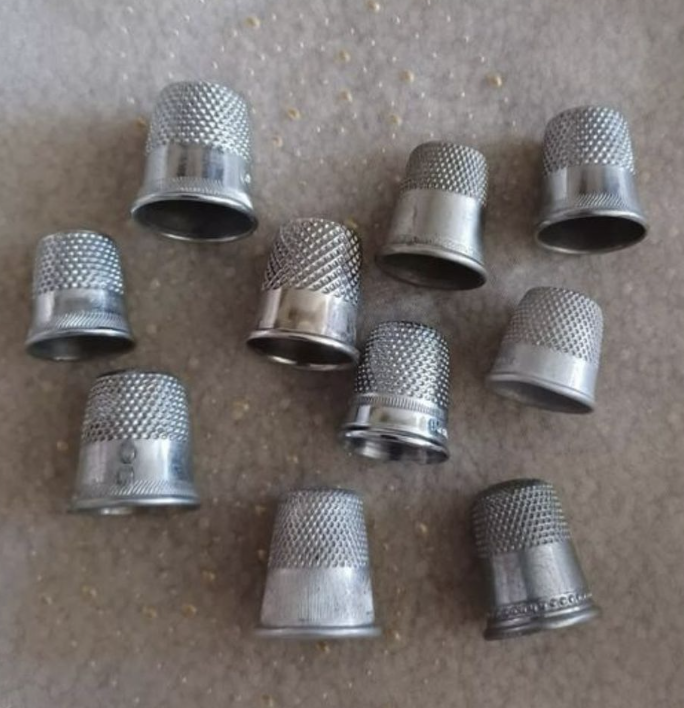Thimbles have a fascinating history that stretches back to ancient times. Excavations in Pompeii uncovered the earliest thimbles dating back to the 1st century AD. These early thimbles were made of bronze and served the simple yet vital purpose of protecting fingers during sewing.

During the medieval period, thimbles were crafted from a range of materials including leather, wood, and metal. Nuremberg in Germany gained a reputation for producing top-quality brass thimbles during the 14th century. As time went on, thimbles made from silver and gold became fashionable among the wealthy, serving as both practical tools and status symbols.
The Industrial Revolution in the 19th century revolutionized thimble production. Factories began churning out thimbles in large quantities, making them more accessible to a wider audience. This period also saw the emergence of decorative and collectible thimbles, featuring intricate designs, engravings, and even gemstones, making them fashionable items.
Thimbles have always been primarily used to protect fingers from needle pricks while sewing. Worn on the middle finger, they enable sewers to apply greater force and precision when dealing with tough materials. Thimbles also found utility in other crafts and trades such as bookbinding, leatherworking, and lace-making.
But thimbles have also made their mark in popular culture and folklore. In the classic board game Monopoly, one of the original game pieces is a thimble, reflecting its common presence in early 20th-century households. In literature, such as in “Peter Pan,” a thimble is used symbolically to represent a kiss.
Today, vintage thimbles hold immense value for collectors and enthusiasts alike. Their historical significance, diverse designs, and craftsmanship make them highly sought-after artifacts. Collectors often specialize in thimbles from specific periods or those crafted from unique materials like porcelain, bone china, or sterling silver.
Museums and exhibitions play a critical role in preserving the legacy of thimbles. For example, the Fingerhut Museum in Creglingen, Germany, showcases thousands of thimbles from different eras and regions, providing a glimpse into their rich history.
Thimbles continue to inspire modern artisans and crafters who appreciate their practicality and aesthetic value. Contemporary thimble makers preserve traditional techniques while infusing them with modern designs, honoring the rich heritage of the thimble and appealing to present-day tastes.
In conclusion, vintage sewing thimbles are more than just practical tools; they are historical artifacts that reflect the evolution of craftsmanship, social status, and cultural practices over centuries. Their enduring legacy speaks to their significance in sewing history and their continued appreciation as collectible treasures.



